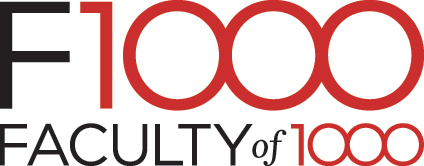About This Project
Oligodendrocytes are cells of the central nervous system that support neuronal activity by producing the myelin sheath, an insulating envelope that surrounds the axons of neurons and increases the speed of conduction of neuronal signals. Myelin plays critical roles in brain function, and abnormal myelination causes debilitating diseases such as Multiple Sclerosis. I want to study the oligodendrocytes of the cerebral cortex, the most complex region of the brain.
Ask the Scientists
Join The DiscussionWhat is the context of this research?
Although our knowledge of the biology of neurons has increased steadily over time, very little is known about the biology of oligodendrocytes, For example, it is still not known whether these cells constitutes a single homogeneous population or if multiple subtypes coexist; if you think at neurodegenerative disorders, it is known that many of them primarily affect specific types of neurons, while sparing others (e.g. Huntington disease affects neurons of the striatum, amyotrophic lateral sclerosis affects neurons of the spinal cord). Conversely, when we talk about myelin disorders (e.g. Multiple Sclerosis, Vanishing white matter, Pelizaeus-Merzbacher) we refer to them as diseases of a single population, in which the cells are all alike in all regions of the nervous system. Is this true?
What is the significance of this project?
For over a century, scientists have focused all their efforts in studying neurons, as the most important cell type of the brain. However, neurons do not function properly if other cell types did not coexist with them; among such cell types, oligodendrocytes are fundamental for neuron signal transmission; however, we still know very little about oligodendrocytes biology, function and, most importantly about the genes necessary for myelin production in the brain. Finding these genes is fundamental, because it may help us find novel therapeutic approaches to treat or cure pathologies affecting myelin formation and/or maintenance.
What are the goals of the project?
I want to perform single-cell measurement of gene expression by purifing individual oligodendrocytes from the cerebral cortex of genetically modified mice where these cells are labeled with green fluorescent protein (GFP). After single-cell sorting, I will extract and analyze the genetic material from each individual cell by using last generation techniques (i.e. single cell-RNA DropSeq; learn more here and here). I expect to find novel genes that may reveal hidden subpopulations of oligodendrocytes, each with specific functions and/or different susceptibility to distinct myelin diseases.
Budget
To achieve my goals I will need to:
1) Purchase transgenic mice (green fluorescent protein will be expressed only in oligodendrocytes) from Jackson Lab (url: https://www.jax.org/strain/007669). A single mouse costs 246.90 $. I will need at least 5 mice (in order to repeat experiments and have biological replicates). Considering replicates, repeats, etc., I will purchase a maximum of 8 mice. Thus, 246.90X10= 1975.2 $
2) RNA DropSeq (http://www.cell.com/abstract/S0092-8674%2815%29005...) for about 40000 single oligodendrocytes purified from the cerebral cortex. Cost for each sample will be the following: - mRNA library preparation/cell = 0.07 $. I will analyze a minimum of 40000 cells purified from 5 different mice. Thus 0.07X40000= 2800 $
3) Others (e.g. consumables, animal housing, etc.)= 1500 $ 4) 8% of total raised as fee to Experiment.com = 502 $
Endorsed by
Meet the Team
Giulio Srubek Tomassy
I was born in Rome, Italy, where I also got a Bachelor Degree and a PhD in Developmental and Cell Biology. After my PhD I moved first to Naples, where I worked at the Telethon Institute of Genetics of Medicine and then at the Univesity of Turin. In 2009 I move to Boston and joined the the Stem Cells and Regenerative Biology Department at Harvard University. It is here at Harvard that my interest about myelin and oligodendrocytes biology started. Last year I have made what I feel is a very important discovery for the advance of the neurosciences; the finding that contrary to current dogmas, neurons are not all myelinated in the same way: what you can read in any biology textboox or even find in Google (https://www.google.com/search?q=myelin&source=lnms...), is that myelin is distributed evenly along the length of an axon, regardless the identity of the neuron to which that axon belongs. However, I demonstrated that different types of neurons are myelinated in different ways. This changes the way we think, as a field, about the role of myelin and suggests that different neurons may use myelin differently to achieve more complex behavior and to diversify their long-distance communication strategies. I am now interested in further studying where this heterogeneity of myelination profiles comes from and if oligodendrocytes also contribute to it. I am waiting to start my own lab, but in the meantime I would like to collect some pilot data as proof of principle that will help me set up my own lab.
Lab Notes
Nothing posted yet.
Press and Media
My work has been featured in Scientific and Non-Scientific journals such as: The Guardian, Nature Review Neuroscience, Science, F1000, Eurekalert!, MultipleSclerosis Forum, Harvard Gazette, Der Spiegel, MedicalXpress.com, ScienceDaily.



Additional Information
Please see my most recent publications on this topic:
1) Tomassy GS, Berger DR, Chen H-H, Kasthuri N, Hayworth KJ, Vercelli A, Seung SH, Lichtman J, Arlotta P (2014) Distinct profiles of myelin distribution along single axons of pyramidal neurons in the neocortex.Science, Apr 18; 344(6181): 313-19 [Highlighted in F1000 Prime, Science Perspective, Nature Reviews Neuroscience, The Guardian, EurekAlert!]
2) Tomassy GS and Valentina Fossati (2014) How big is the myelinating orchestra? Cellular diversity within the oligodendrocyte lineage: facts and hypotheses. Frontiers in Cellular Neuroscience, 8:201. doi: 10.3389/fncel.2014.00201
3) Tomassy GS, Dershowitz LB, Arlotta P (2015) Diversity matters: A revised guide to myelination. Trends in Cell Biology, In press, DOI: http://dx.doi.org/10.1016/j.tcb.2015.09.0
Project Backers
- 11Backers
- 6%Funded
- $379Total Donations
- $34.45Average Donation



